Live now. Seize the day. We all know these things, but it can be hard to live by our beliefs.
Not so for Marjorie Jean Nash. She lived life to the full and loved every minute of it. But all long and fruitful lives must come to an end. How fitting that Marjorie’s adored family ensured that her send off was a celebration of her life. Where? In a beautiful little chapel used mainly for weddings at Inglewood Estate located in a secluded valley of Kangaroo Ground.

I arrived far too early, even before the guest of honour had arrived. To fill in time I walked in sunshine past the ivy covered chapel and around a small lake by a curtain of trailing weeping willows

 Peaceful, meditative, a chance to reflect on the extraordinary life of an elderly, vibrant, fun-loving woman. I remembered writing a brief biography for her eightieth birthday and would like to share it with you in memory of Marjorie.
Peaceful, meditative, a chance to reflect on the extraordinary life of an elderly, vibrant, fun-loving woman. I remembered writing a brief biography for her eightieth birthday and would like to share it with you in memory of Marjorie.

The music swells, skirts twirl, feet tap to a staccato beat. It is 1943 and a handsome Australian flying officer grabs Marjorie around the waist and rocks her high above his broad shoulders only to deftly roll her back onto her feet. She twirls away, but he catches her outstretched hand and pulls her to him. Everyone is looking, applauding their energy and vitality, their skill.
To dance with the famous Australian actor ‘Chips’ Rafferty, and to have him tell her fortune, leaves seventeen year old Marjorie breathless and with memories that will last a lifetime. But Chips isn’t the only dancer in the room and soon she is twirling and spinning with another young officer, and then, another. Marjorie loves to dance.
 Life was not always bright lights and fun. The First World War took her father, Percival William Icke, away for five years. He left behind a wife and six children and when he returned he had another five children. In 1923, Marjorie was born in Ballarat, a famous Australian goldmining town. She was the third child in the ‘second family’ and her big sister, Myrtle, from the ‘first family,’ looked after her. In such a large household big siblings cared for little siblings. However, Marjorie’s mother was the undisputed matriarch of her large brood. She always called Marjorie by her given name, but her father had several nicknames for her: Marnie, Minnie or Mickey Mouse.
Life was not always bright lights and fun. The First World War took her father, Percival William Icke, away for five years. He left behind a wife and six children and when he returned he had another five children. In 1923, Marjorie was born in Ballarat, a famous Australian goldmining town. She was the third child in the ‘second family’ and her big sister, Myrtle, from the ‘first family,’ looked after her. In such a large household big siblings cared for little siblings. However, Marjorie’s mother was the undisputed matriarch of her large brood. She always called Marjorie by her given name, but her father had several nicknames for her: Marnie, Minnie or Mickey Mouse.
The entire family of Mum, Dad and eleven children eked out a meagre existence on a settlement farm at Pashendale. A soldier’s settlement was a small parcel of land allocated by the government to returned soldiers in recognition of their contribution to Australia. It was a great idea, but impracticable. The farms were too small to do anything with, apart from raising a few cattle, pigs and a couple of sheep. During the great depression, burdened by financial difficulties, many soldiers and their families simply had to walk away from their farms to search for work in the city. Although times were tough, Marjorie has many happy memories of growing up with enough children to form a cricket team. “Pashendale is very hilly,” she says. “We used to blow up a couple of car tyres and have races sliding down a steep grassy hill.”
However, the time on the farm was short-lived and the family moved to a house in Merino. “At that time,” Marjorie says, “My grandfather had a goldmining shed out of Ballarat. I wanted to go to the toilet and he told me to go behind a tree.” Marjorie doubles up with laughter when she says, “A little fox terrier dog bit me on the bottom. I wondered what had struck me.” She shows me a mark on her wrist. “See this,” she says. “When I went to primary school I was living in Ballarat with crabby Auntie Gertie. One day I went to school with a lolly in my mouth and the teacher whacked me with a ruler on the wrist. You should have seen it swell. It was one time Auntie Gertie stood up for me. She really told that teacher off.”
Marjorie also vividly remembers the day her sixteen-year-old sister, Dorothy Pearl, died. They were living in Casterton at the time and Dorothy’s young man let her drive his car. The wheels caught the gravel; the car spun out and overturned. He only broke an arm, but Dorothy died from head injuries. Marjorie says, “She was going to a ball that night and I remember her lovely white, silk and lace party dress and pearl bag laid out on the bed where she had put them.”
When Marjorie was sixteen, and had just started training as a nurse’s aid at the Ballarat Base Hospital, the Second World War began. In 1940 she joined the Women’s Australian Air Force (WAAF) and was based at Melbourne University. The one part of her duties she really enjoyed was looking after medical students. “They were just like my brothers, and I knew how to keep them in their place,” Marjorie says. She eventually completed her training at the Prince Henry Hospital.
 During her time with the WAAFs, Marjorie became a corporal and eventually rose to acting-Sergeant. At one stage she was delighted to have one of her brothers under her command, but her most important memories are of enduring friendships, parties and fun with her mates. Young, intelligent and full of life, the girls would catch a tram every chance they got, for a short ride to the heart of the city. The teashops in the Royal Arcade were great meeting places. They would drink coffee, chat and laugh as they watched the world go by. Marjorie had a great war.
During her time with the WAAFs, Marjorie became a corporal and eventually rose to acting-Sergeant. At one stage she was delighted to have one of her brothers under her command, but her most important memories are of enduring friendships, parties and fun with her mates. Young, intelligent and full of life, the girls would catch a tram every chance they got, for a short ride to the heart of the city. The teashops in the Royal Arcade were great meeting places. They would drink coffee, chat and laugh as they watched the world go by. Marjorie had a great war.
It is fifty years since she was in the WAAFs and every year on ANZAC (Australian and New Zealand Army Corp) commemoration day she still meets her mates to reminisce about the experiences they shared during those difficult years when Australia was at war. It was at Prince Henry Hospital that she met the love of her life, Henry Edward Tynan. They lived for each other, became engaged and planned their wedding. One day, when he was driving home from Sydney, the wheels caught in the gravel, the car spun out and crashed into a bridge. Marjorie felt that life was repeating itself when, just like Dorothy Pearl, Henry died of head injuries.
 In the 1950’s a polio epidemic hit Australia and Marjorie was sent to nurse polio victims at the Ballarat Rehabilitation Hospital. She worked in the children’s wards caring for babies struck down by the terrible disease. To try to strengthen and straighten their limbs she would put the baby into a bath and exercise their joints in the water. These days polio has almost been eradicated, but water therapy is still highly regarded; only now it is mainly the elderly who exercise stiff limbs in hydrotherapy pools.
In the 1950’s a polio epidemic hit Australia and Marjorie was sent to nurse polio victims at the Ballarat Rehabilitation Hospital. She worked in the children’s wards caring for babies struck down by the terrible disease. To try to strengthen and straighten their limbs she would put the baby into a bath and exercise their joints in the water. These days polio has almost been eradicated, but water therapy is still highly regarded; only now it is mainly the elderly who exercise stiff limbs in hydrotherapy pools.
In 1955, when she was thirty-two, Marjorie met Harry Nash. Born on the Isle of Dogs, England he jumped ship to come to Australia. She says, “He was a merchant seaman. Totally handsome and always a good worker. He told me he was looking for a good sort.” He obviously found one because they eloped and married in Wesley church in Lonsdale Street, Melbourne. They had been married forty-six years and had four children when one day he arrived home unexpectedly and Marjorie knew something was very wrong. “His face was as red as a turkey. I knew that he wasn’t well and needed to see a doctor. I tried so hard get him to go, but he refused. Instead, he went back to his ship. Later that day they called to say he’d had an ‘accident.’ He’d really had a stroke and was paralysed down one side. It changed his personality. Over the following years sometimes I wished his tongue has been paralysed as well.” Harry died on ANZAC Day, 2002. Marjorie’s family and many friends gathered around to love and support her through this difficult time.
 Arm in arm Marjorie and her ninety-one year old sister, Myrtle Annie, face the future. They may be getting older, but both look and act much younger than their age. Marjorie in particular is very active, and as her daughters say, “Mum’s heart is bigger than her body. When we were growing up, she was always helping anyone in need and it was nothing to come home and find some one sleeping on the couch, or extra chairs pulled up to the table. She fostered a boy for many years and took in a woman and her child because they needed a roof over their head and a good square meal. She’ll talk to anyone on a bus or tram, bring them home with her, and they soon become part of the furniture.”
Arm in arm Marjorie and her ninety-one year old sister, Myrtle Annie, face the future. They may be getting older, but both look and act much younger than their age. Marjorie in particular is very active, and as her daughters say, “Mum’s heart is bigger than her body. When we were growing up, she was always helping anyone in need and it was nothing to come home and find some one sleeping on the couch, or extra chairs pulled up to the table. She fostered a boy for many years and took in a woman and her child because they needed a roof over their head and a good square meal. She’ll talk to anyone on a bus or tram, bring them home with her, and they soon become part of the furniture.”

 After a celebratory service where family and friends shared with us anecdotes and memories we quietly filed out to the toe tapping strains of The Good Ship Lollypop (Marjorie’s favourite song). Marjorie was an inspiration to us all. Always busy, always happy she lived on her own terms, independent and proud of it. She took great delight and pride in her family and loved every one of them with a passion. Farewell, Marjorie. You will be sadly missed.
After a celebratory service where family and friends shared with us anecdotes and memories we quietly filed out to the toe tapping strains of The Good Ship Lollypop (Marjorie’s favourite song). Marjorie was an inspiration to us all. Always busy, always happy she lived on her own terms, independent and proud of it. She took great delight and pride in her family and loved every one of them with a passion. Farewell, Marjorie. You will be sadly missed.






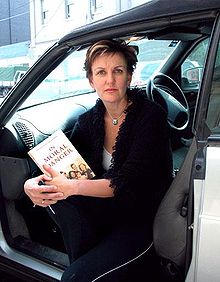


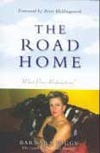










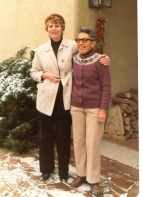
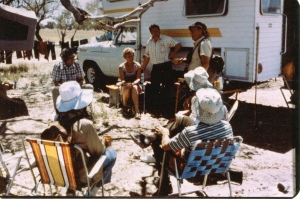
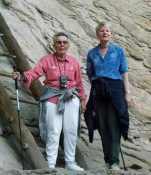






 I arrived home to Melbourne to rain, hail and a top temperature of 10 Celsius. I soon grabbed my slow cooker. There is nothing better on a cold winter’s day than sharing a hearty beef casserole, crusty bread and stories with family and friends. however, for me it is the getting together, the talking and sharing that counts. If I had a put a feather on our plates we would have thought it was chicken.
I arrived home to Melbourne to rain, hail and a top temperature of 10 Celsius. I soon grabbed my slow cooker. There is nothing better on a cold winter’s day than sharing a hearty beef casserole, crusty bread and stories with family and friends. however, for me it is the getting together, the talking and sharing that counts. If I had a put a feather on our plates we would have thought it was chicken.





 Life was not always bright lights and fun. The First World War took her father, Percival William Icke, away for five years. He left behind a wife and six children and when he returned he had another five children. In 1923, Marjorie was born in Ballarat, a famous Australian goldmining town. She was the third child in the ‘second family’ and her big sister, Myrtle, from the ‘first family,’ looked after her. In such a large household big siblings cared for little siblings. However, Marjorie’s mother was the undisputed matriarch of her large brood. She always called Marjorie by her given name, but her father had several nicknames for her: Marnie, Minnie or Mickey Mouse.
Life was not always bright lights and fun. The First World War took her father, Percival William Icke, away for five years. He left behind a wife and six children and when he returned he had another five children. In 1923, Marjorie was born in Ballarat, a famous Australian goldmining town. She was the third child in the ‘second family’ and her big sister, Myrtle, from the ‘first family,’ looked after her. In such a large household big siblings cared for little siblings. However, Marjorie’s mother was the undisputed matriarch of her large brood. She always called Marjorie by her given name, but her father had several nicknames for her: Marnie, Minnie or Mickey Mouse. During her time with the WAAFs, Marjorie became a corporal and eventually rose to acting-Sergeant. At one stage she was delighted to have one of her brothers under her command, but her most important memories are of enduring friendships, parties and fun with her mates. Young, intelligent and full of life, the girls would catch a tram every chance they got, for a short ride to the heart of the city. The teashops in the Royal Arcade were great meeting places. They would drink coffee, chat and laugh as they watched the world go by. Marjorie had a great war.
During her time with the WAAFs, Marjorie became a corporal and eventually rose to acting-Sergeant. At one stage she was delighted to have one of her brothers under her command, but her most important memories are of enduring friendships, parties and fun with her mates. Young, intelligent and full of life, the girls would catch a tram every chance they got, for a short ride to the heart of the city. The teashops in the Royal Arcade were great meeting places. They would drink coffee, chat and laugh as they watched the world go by. Marjorie had a great war. In the 1950’s a polio epidemic hit Australia and Marjorie was sent to nurse polio victims at the Ballarat Rehabilitation Hospital. She worked in the children’s wards caring for babies struck down by the terrible disease. To try to strengthen and straighten their limbs she would put the baby into a bath and exercise their joints in the water. These days polio has almost been eradicated, but water therapy is still highly regarded; only now it is mainly the elderly who exercise stiff limbs in hydrotherapy pools.
In the 1950’s a polio epidemic hit Australia and Marjorie was sent to nurse polio victims at the Ballarat Rehabilitation Hospital. She worked in the children’s wards caring for babies struck down by the terrible disease. To try to strengthen and straighten their limbs she would put the baby into a bath and exercise their joints in the water. These days polio has almost been eradicated, but water therapy is still highly regarded; only now it is mainly the elderly who exercise stiff limbs in hydrotherapy pools. Arm in arm Marjorie and her ninety-one year old sister, Myrtle Annie, face the future. They may be getting older, but both look and act much younger than their age. Marjorie in particular is very active, and as her daughters say, “Mum’s heart is bigger than her body. When we were growing up, she was always helping anyone in need and it was nothing to come home and find some one sleeping on the couch, or extra chairs pulled up to the table. She fostered a boy for many years and took in a woman and her child because they needed a roof over their head and a good square meal. She’ll talk to anyone on a bus or tram, bring them home with her, and they soon become part of the furniture.”
Arm in arm Marjorie and her ninety-one year old sister, Myrtle Annie, face the future. They may be getting older, but both look and act much younger than their age. Marjorie in particular is very active, and as her daughters say, “Mum’s heart is bigger than her body. When we were growing up, she was always helping anyone in need and it was nothing to come home and find some one sleeping on the couch, or extra chairs pulled up to the table. She fostered a boy for many years and took in a woman and her child because they needed a roof over their head and a good square meal. She’ll talk to anyone on a bus or tram, bring them home with her, and they soon become part of the furniture.”





